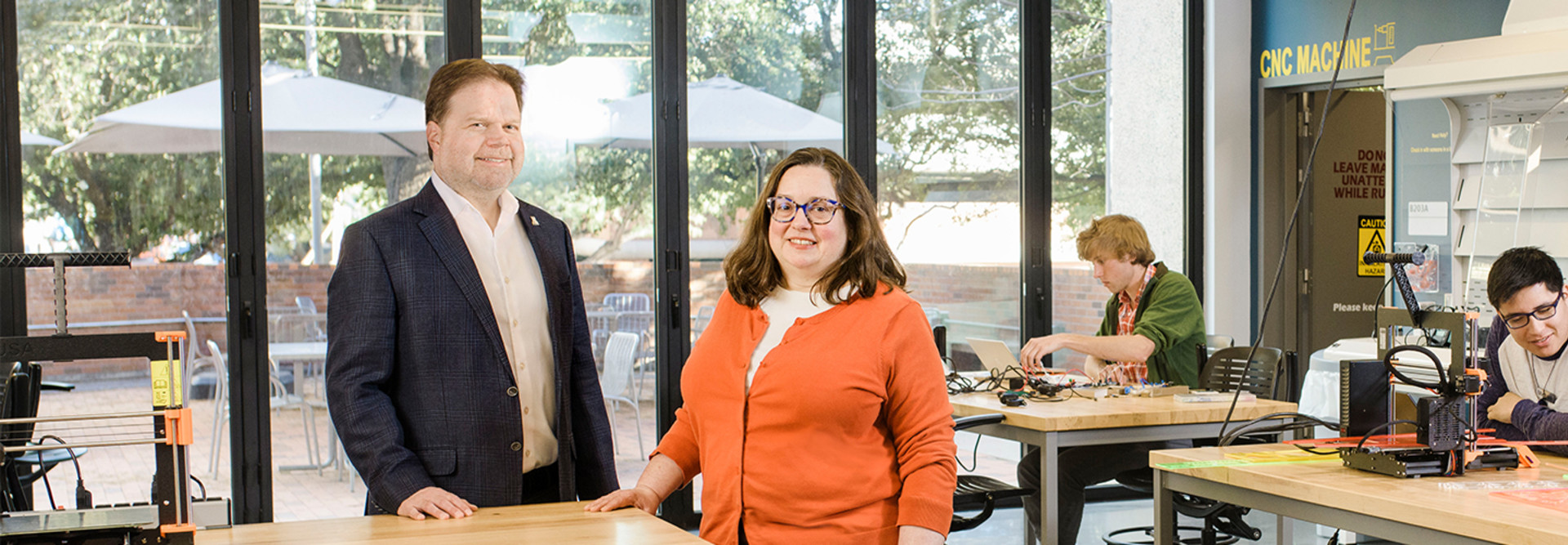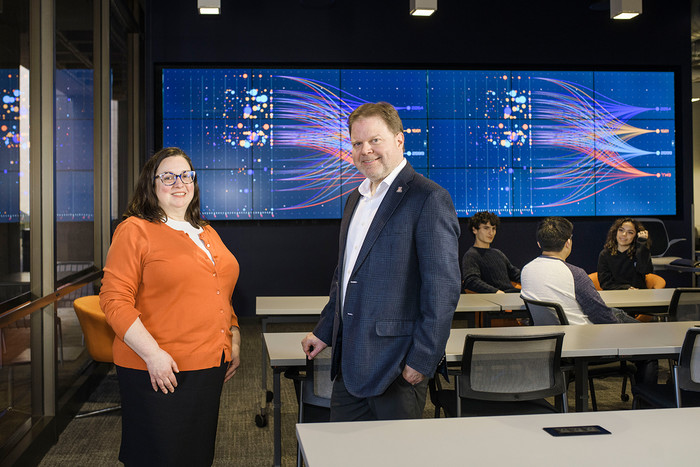Vice Dean Sarah Shreeves and Dean of University Libraries Shan Sutton pose inside one of the recently renovated libraries at the University of Arizona.
“Some students are struggling financially and can’t afford a laptop or Wi-Fi,” says Sarah Shreeves, the vice dean of university libraries. “We also have students whose laptops break down, so they can come in and borrow something for emergencies.”
Overall, the renovated library is popular, Sutton says. “We were stunned that it was packed full of students during the first week of the fall semester since there are typically no assignments to work on at that point. But the mission of the library is much broader than it used to be.”
University of New Mexico Opens Adobe Creative Commons
In November, the University of New Mexico opened Adobe Creative Commons, a digital media workspace at the Zimmerman Library where students can pursue creative projects, such as videos, podcasts and graphic design.
Research shows that for students to succeed in the modern job market, they must develop soft skills such as creativity, communication and collaboration. Adobe Creative Commons is a space where they can do so, says Elisha Allen, the university’s director of online strategies and academic technologies.
Adobe Creative Commons features high-powered Macs and PCs running Adobe Creative Cloud software, two secluded editing bays, two fully equipped soundproof audio booths for podcasts and tables with large LED displays for students to collaborate. Adobe donated $100,000 to create the space.
Staff provide training and support on how to use Adobe software and the equipment, and students can borrow technology for their creative pursuits. The space also includes an IT service desk where students can get computing and application support, Allen says.
LEARN MORE: How HBCUs incorporate Adobe tools to foster digital literacy.
Adobe Creative Commons is part of the library’s broader efforts to promote digital literacy and diversify its services, says Leo Lo, dean of UNM’s College of University Libraries and Learning Sciences.
The new space is located in the Learning Commons on the library’s first floor, a hub of student activity that also features a cafe, treadmill desks and areas for students to collaborate.
“This is a place where students can feel comfortable, talk and do group work and not worry about having to be quiet,” Lo says.
Sam Houston State Increases Collaboration Spaces
In Huntsville, Texas, Sam Houston State University has renovated the first two floors of its library. The 53-year-old Newton Gresham Library now provides students with more technology and collaborative spaces, and it houses the university’s First-Generation Center and Academic Success Center, which offer mentoring and tutoring resources.
“The goal is for the library to become a one-stop shop for academic services and support, so when students need certain things, they know where to go,” says Lisa Shen, SHSU’s director of library public services.
Before, the library had a computer lab, but there were very few places for students to collaborate and use technology, says Eric Owen, the library’s executive director. There were two tables set up with monitors, but they were not in enclosed spaces.
In fall 2021, SHSU completed a $15 million library renovation that includes 17 new group study rooms and conference rooms featuring 65- and 75-inch Samsung 4K displays.












